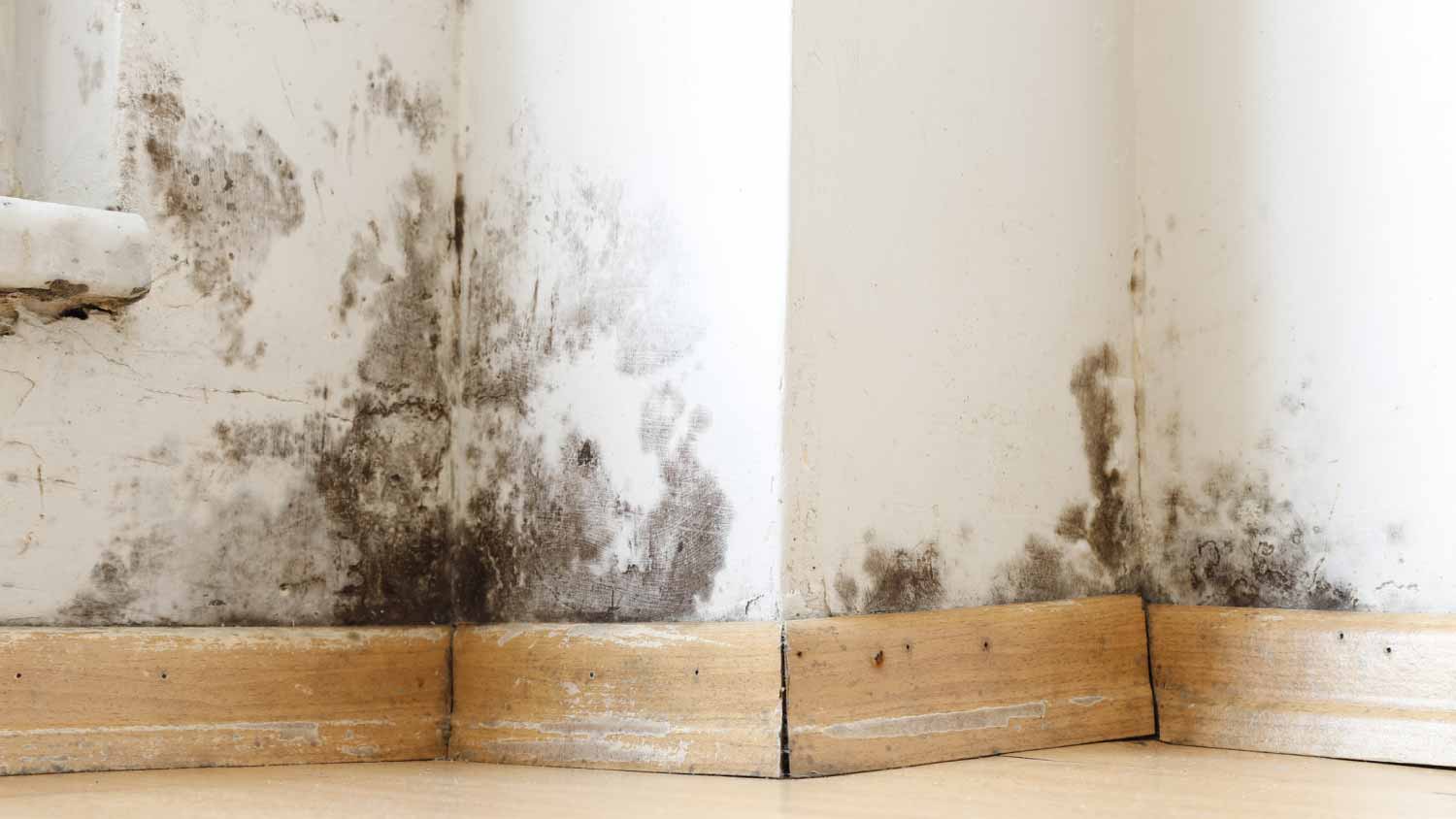
Mold remediation cost can quickly escalate. But if you have mold in your home, the cost for mold remediation is worth it.
Green mold remediation—or any other color—likely will cost you some green


Mold remediation costs $2,400 on average.
If you need mold remediation, you’ll likely have to bear some of the cost.
Insurance may pay for mold removal if its cause is a covered event.
Even if insurance covers most of the cost, you may still have to pay a deductible.
Finding mold in your home can be a nightmarish scenario. Not only is it potentially dangerous to your family's health, but you may also worry about how to pay for remediating it. The average cost for mold remediation is $2,400, although a widespread problem can cost several thousand dollars or more to fix.
But who pays for mold remediation? In certain cases, your homeowners’ insurance or commercial property insurance may pay for at least part of the process. Learn more about the criteria you need to meet before insurance will help with mold remediation costs.
If a mold inspection confirms the presence of mold on your property, you can take steps to figure out who pays for mold remediation.
Your insurance company may pay for most or part of the mold remediation if the reason the mold appeared is a covered condition. For example, if you have a plumbing issue that exposes the home to water damage, you may end up with mold in the future. If your insurance policy includes coverage for water damage from plumbing problems, the insurer should pay for related mold remediation.
However, if you don’t have coverage for something like sewage backup, and if this issue leads to the formation of mold, the insurer won’t cover the mold removal.
Be prepared to advocate for yourself. Insurance companies may try to argue that the mold is caused by an uncovered event. You may need documentation showing the relationship between the water damage event and the mold formation.
As the residential or commercial property owner, you will likely have to pay at least some of the mold removal costs.
Even if the insurer agrees to pay all the costs for the mold remediation, you may still have to pay a deductible.
Your insurance policy may specify that the insurer only pays a portion of mold remediation costs.
If you don’t have the right coverage on your property insurance policy, you could be on the hook for the entire cost.
If another party was responsible for causing the water damage and mold formation at your property, you could seek a financial judgment against that party. Perhaps a plumber incorrectly installed a new dishwasher, leading to major water leaks and mold.
If your insurer refuses to cover the cost of mold remediation in a case like this, you could seek a payment from the responsible party. However, if the negligent party refuses to pay, you’ll need to file a civil lawsuit seeking reimbursement.

When you are looking for signs of mold in a house, start by looking in common areas where mold appears, including:
Bathrooms
Basements
Cabinets underneath sinks
Behind washing machines
Underneath dishwashers
Behind walls
Near leaky windows or doors
Underneath damp carpet
Outdoor air currents carry mold spores, and some of them may enter your home. If the spores land on a surface that has constant moisture, mold may begin growing.
Catching and stopping any water leaks as early as possible can prevent mold from forming. If you have dampness in a basement, using a humidifier or fans to dry the damp areas can help. Keeping the ideal indoor humidity level—rather than letting it climb too high—can also reduce the chance of mold forming in your home.
If you are sure you have mold, you could try to clean the area yourself. However, getting rid of mold in your home as a DIY project is only recommended for a small surface area. You’ll need to wear protective gear and use a cleaning solution like vinegar to safely tackle the mold remediation yourself.
As a better option, hiring a local mold removal professional is the surest way to eliminate mold, especially if you have a large outbreak. If you want the insurance company to help you pay for mold remediation, you must hire a professional.
This is a small family owned company that will give you excellent service.
We had LHR install a new roof and gutter system. While they were not the cheapest, they were considered the most reliable and fetish for using only high-value products that would last for many years. Additionally, they were highly professional and never tried to push their services or any...
From average costs to expert advice, get all the answers you need to get your job done.

Mold remediation cost can quickly escalate. But if you have mold in your home, the cost for mold remediation is worth it.

The cost of a mold inspection might seem high, but it’s one of the best investments you can make for your health and home. Read on to learn cost-saving tips.

Learning how to remove mold from wood furniture is a worthwhile DIY project because you can save your expensive wood pieces. Learn more about safely removing mold from wood furniture.

Mold growth in your home poses a serious risk to your belongings and health. But after mold removal, knowing which items to pitch and which you can keep can be confusing. This guide will help you sort everything out so you know what to save.

Water damage vs. mold: knowing the difference could help you identify mold as soon as it appears. Keep reading to learn signs of water damage and mold.

Knowing when to get a mold inspection is important, especially if you live in a high-humidity area. Here’s how to decide whether or not to call a professional.